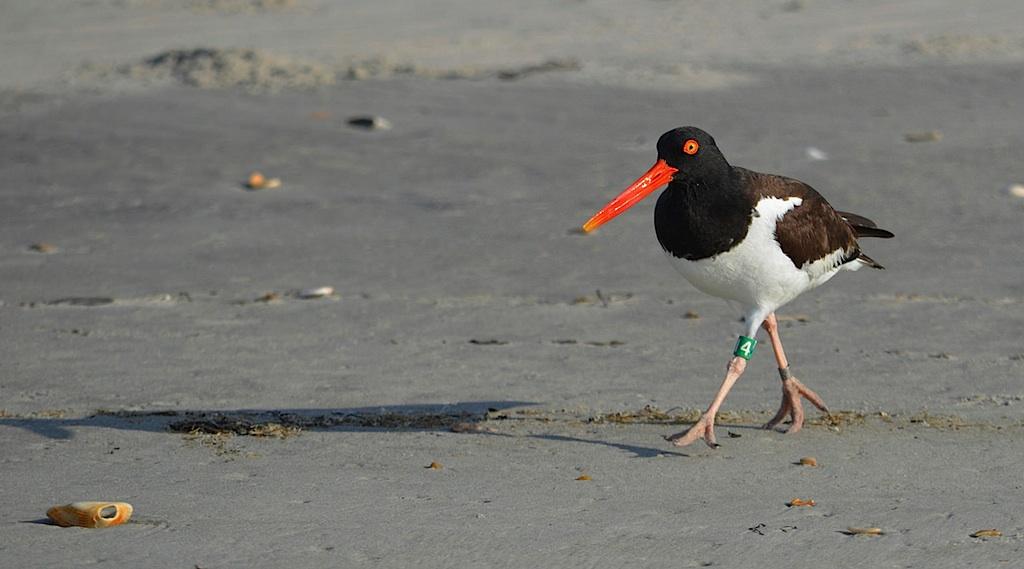This American oystercatcher, not-so-affectionately known as Gr14, has reared 9 chicks at Cape Hatteras National Seashore over the past decade.
Speak Softly And Carry....A Big Beak!

Support Journalism about National Parks!
National Parks Traveler is a 501(c)(3) nonprofit.
The Essential RVing Guide

The National Parks RVing Guide, aka the Essential RVing Guide To The National Parks, is the definitive guide for RVers seeking information on campgrounds in the National Park System where they can park their rigs. It's available for free for both iPhones and Android models.
This app is packed with RVing specific details on more than 250 campgrounds in more than 70 parks.
You'll also find stories about RVing in the parks, some tips if you've just recently turned into an RVer, and some planning suggestions. A bonus that wasn't in the previous eBook or PDF versions of this guide are feeds of Traveler content: you'll find our latest stories as well as our most recent podcasts just a click away.
So whether you have an iPhone or an Android, download this app and start exploring the campgrounds in the National Park System where you can park your rig.


What is always conveniently left out when making the claim that turtle nesting has gone up on CHNSRA, is the fact that nesting was also up all over the south eastern US. Florida, Georgia and South Carolina all had record numbers as well. This is another example of where Audubon, SELC, and DoW are proven to be dishonest.
/2013/09/cape-hatteras-national-seashore-among-southeast-locations-record-sea-turtle-nesting-numbers23929
That article was authored by Ted Williams, whom likes to give cats Tylenol and watch them die, a hero of the left.
Yeah Gary, tell those elderly, handicapped, and children they should just walk a mile in the hot sand. What a bunch of sissies...
And most of those ramps are closed now. Maybe you shouldn't comment on something you know nothing about Gary.
Amazing how some are so lazy they feel that if they can't get there without using a big truck, then it's "off limits". Considering this entire beach has access points every two miles along it's entire stretch, that means AT MOST someone must walk a mere mile into the "remote backcountry". Some people in this country, make the rest of us look lazy. It's almost insulting to those of us that actually walk, and sometimes for many days in our National Parks.
Let's try to rein in the vitriol, folks.
Google Earth shows Ramp 23, Ramp 34, Ramp 45, and Salt Pond Road as closed. Everything else is open. It's called SHOES and boots. Boy, how do you think people handle hiking in the deserts in the Southwest? It's much more severe in many of the places there, than on the sandy and windy beach.
Handicapped can't make it up to the top of many mountains in the West, would find it challenging to hike the AT, or find it challenging to go into the backcountry of many of our National Parks. There are many places in the parks for handicapped individuals, but not everything IS or should be accessible to those that can't walk.
Personally, i'd never spend an hour in an ORV portion in that National Seashore, if I ever chose to go there, which doesn't sound very appealing as it is. Sounds like the VFA areas are the more quaint and pleasant places to actually spend some quality time. After reading about how some of the the local population behaves by throwing death threats at those that supported the VFA, it sounds like some of these business owners don't deserve the business of those that like peace, quiet, and have no problem walking. I wouldn't spend a dime at any of those businesses..